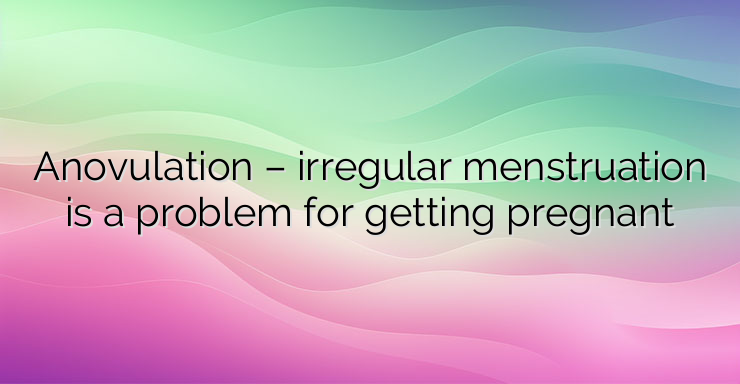Anovulation is a common cause of infertility. It is caused by hormonal imbalance and the main sign of this is irregular menstruation. Anovulation can often be treated with lifestyle changes and/or medication. Anovulation occurs when an egg is not released during a menstrual cycle. An egg is needed for pregnancy. Because multiple hormones are involved in ovulation, there are many causes of anovulation. Chronic anovulation is a common cause of infertility. How does ovulation occur? Ovulation is part of the menstrual cycle. On average, this occurs on day 14 of a 28-day menstrual cycle. There are numerous hormones involved in ovulation. The ovulation process begins when the hypothalamus releases gonadotropin-releasing hormone. This causes follicle-stimulating hormone and luteinizing hormone to be released from the pituitary gland. Between days six and fourteen of the menstrual cycle, follicle-stimulating hormone causes the follicles in one ovary to begin to mature. From the tenth to the fourteenth day of the cycle, only one of the developing follicles forms a fully mature egg. Around day 14 of the menstrual cycle, a sudden spike in luteinizing hormone levels causes the ovary to release its egg. After ovulation, the egg begins its five-day “journey” through the fallopian tube to the uterus. As the egg travels through the fallopian tube, the level of progesterone increases, preparing the uterine lining for pregnancy. Menstruation occurs when the egg that is released from the ovary is not fertilized, so the uterus sheds its lining. Therefore, you technically cannot have a period without ovulation. However, some women have a menstrual cycle without ovulation. This is known as abnormal uterine bleeding or anovulatory bleeding. Anovulatory bleeding is non-cyclic uterine bleeding that is irregular. Abnormal uterine bleeding is common among women of childbearing age. Risk factors for anovulatory cycles include: Menarche; Perimenopause; Polycystic ovary syndrome; A very low body mass index, usually due to either anorexia or prolonged excessive exercise. What are the signs and symptoms of anovulation? Knowing the common signs of ovulation and tracking your menstrual cycle can help distinguish the signs and symptoms of anovulation. It is important to know that menstruation does not necessarily mean the presence of ovulation. Signs and symptoms of anovulation may include: Irregular periods. The length of time between periods continues to change, this is considered an irregular period. The average menstrual cycle is 28 days, but it can be a few days shorter or longer than that. Very profuse menstruation. Heavy menstruation is defined as a loss of more than 80 ml of blood within a period and/or a period that lasts more than seven days. Absence of menstruation (amenorrhea).Missing one or more periods without pregnancy can be a sign of anovulation. Absence of cervical mucus. Just before and during ovulation, the heaviest vaginal discharge, called cervical mucus, is usually observed. Irregular basal body temperature: Basal body temperature is the temperature when the body is completely at rest. Ovulation can cause a slight rise in basal body temperature. References: 1. Jones K, Sung S. Anovulatory Bleeding. (https://www.ncbi.nlm.nih.gov/books/NBK549773/) In: StatPearls [Internet]. Treasure Island, FL: StatPearls Publishing; 2021.. 2. Hormone Health Network. Female Infertility. (https://www.hormone.org/diseases-and-conditions/infertility-female)


Leave a Reply